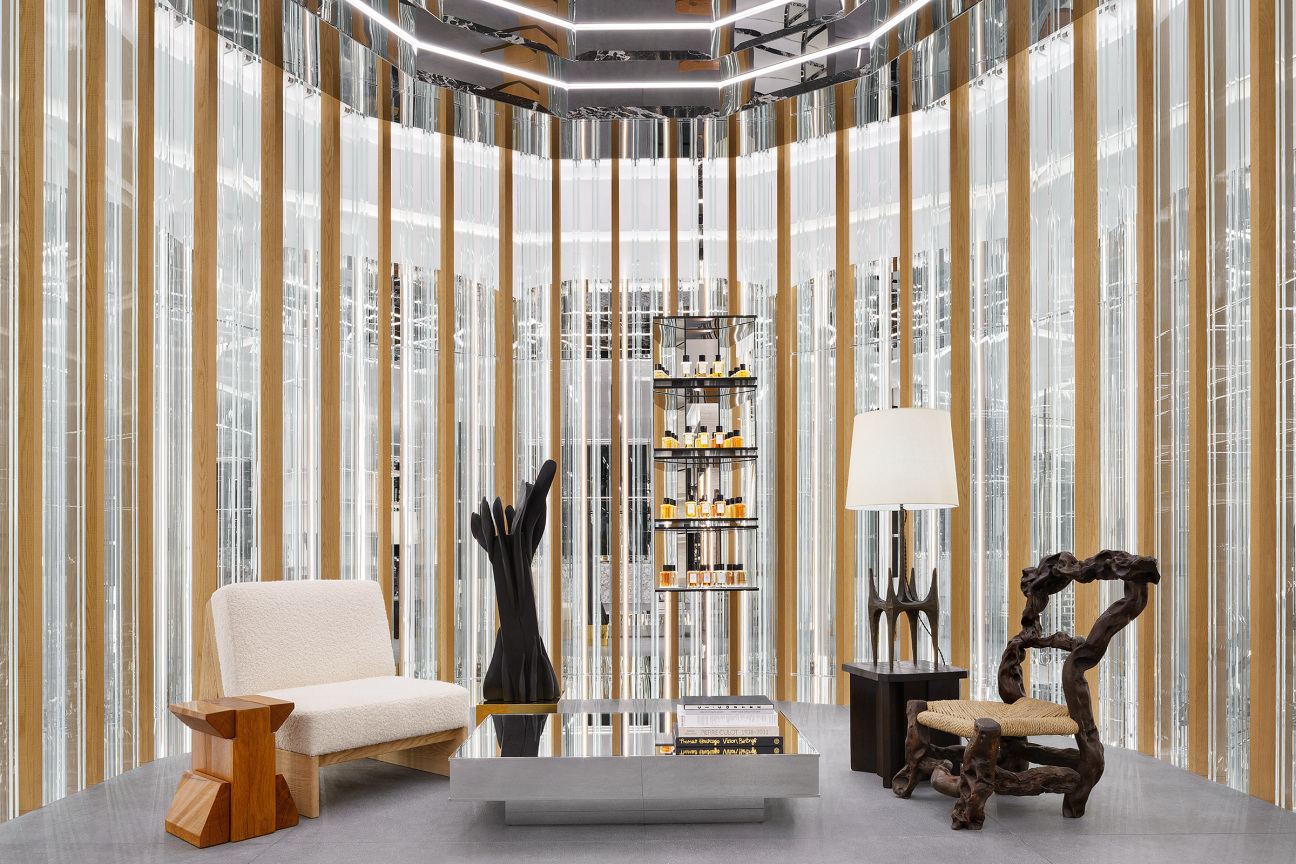
If Hedi Slimane, creative director of Celine, had lived in another era (perhaps a century or two ago), he might have been known as a great patron of the arts. Art history’s greatest benefactors—from the Medicis to Peggy Guggenheim—have heralded new ways of seeing and celebrating beauty. The same might be said of Slimane, who, since joining Celine in 2018, has consistently deepened the French label’s engagement with the contemporary art world.
The brand’s collaborations have ranged from Bauhaus-inspired skateboards featuring artwork by the late Swiss artist David Weiss to its Cosmic Cruiser collection created with 14 artists. Now, this synergy reaches one of its most vibrant expressions in Celine’s new 4,000-square-foot store in Miami’s Design District.
Works by leading contemporary artists—including Simone Fattal, Elaine Cameron-Weir, Davina Semo, Antonia Kuo, Maia Ruth Lee, Eli Ping, Marcelo Silveira, Lucy Skaer, and SoiL Thornton—unfurl across two sun-filled floors. To mark the store’s reopening, Fattal, Ping, and Skaer reflect on their contributions to the space and Celine’s emphasis on artworks that embrace materiality, craft, and embodied meaning.
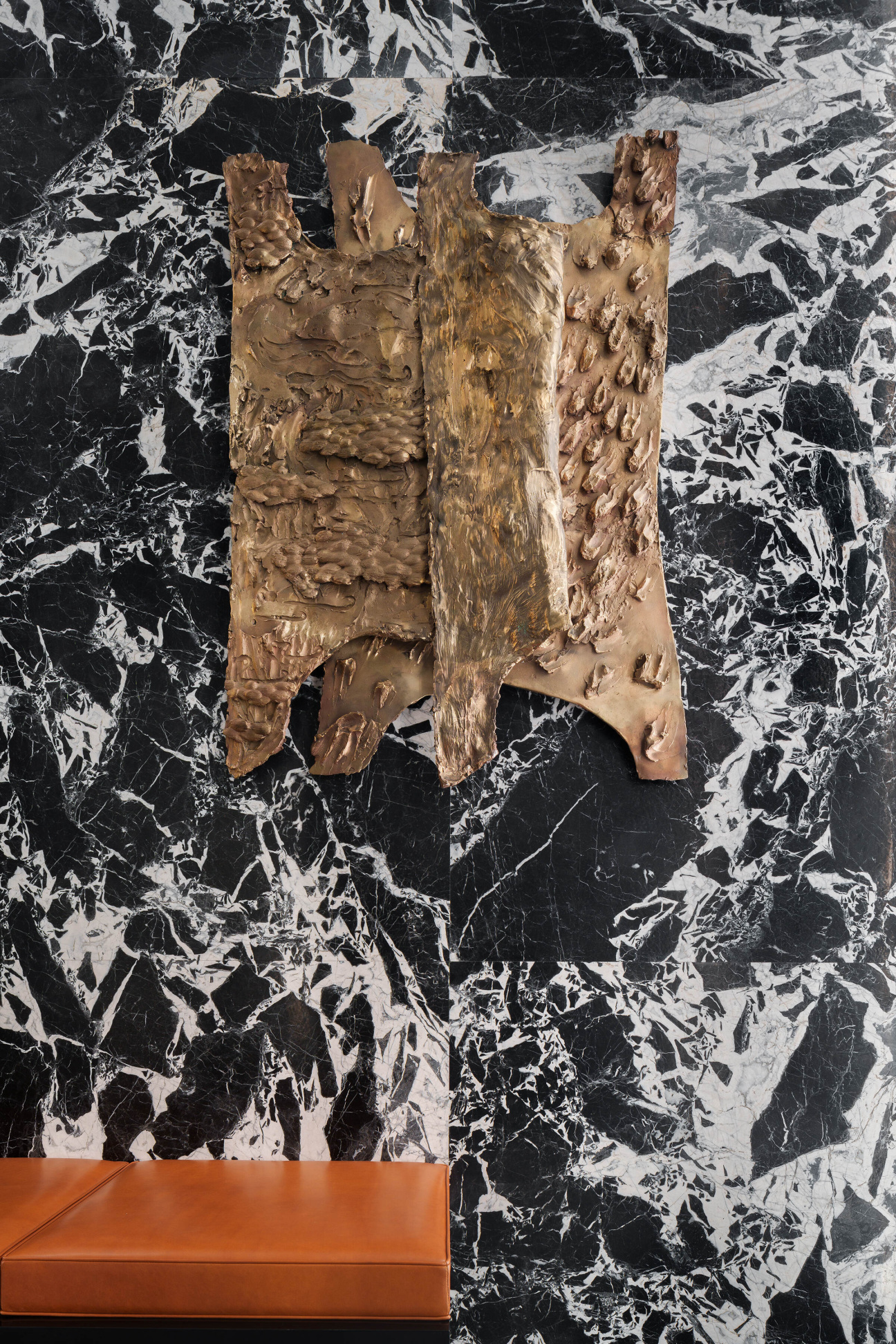
In her home and studio in the Outer Hebrides, a remote island chain off the coast of Scotland, Lucy Skaer creates sculptures, drawings, and installations that conjure archaic histories hewn from the primeval materials of wood, stone, and bronze. The English-born artist’s practice involves exhaustive research into the architecture, agriculture, and societal frameworks of past civilizations, the remnants of which haunt our contemporary world.
She then sets to work fabricating her sculptures, which often resemble ancient ceremonial objects or vestments. Celine’s Miami collection features Skaer’s Fog on Fire, 2020, a lustrous and tactile bronze that depicts overlapping imaginary animal pelts. The piece was originally commissioned for an installation at Bloomberg Space in London, which, as Skaer discovered in her research, sits above a Roman temple devoted to the god Mithras, an obscure mythological figure whose cult reveled in all manners of hedonism.
Skaer’s sculpture, with its implied relationship to both hunting and garment-making, was a testament to the storied history of the venue. “That part of London also includes Tanner’s Row and vestiges of trades that are no longer there,” says Skaer. “I came to the idea of using animal pelts as a recognizable commodity, tactile and possessing the qualities of a particular animal.” Skaer sees Celine's Miami outpost as a fitting environment for her work. “I’m interested in how we formulate languages, and the boundaries that exist between humans and animals, including fashion,” she notes.
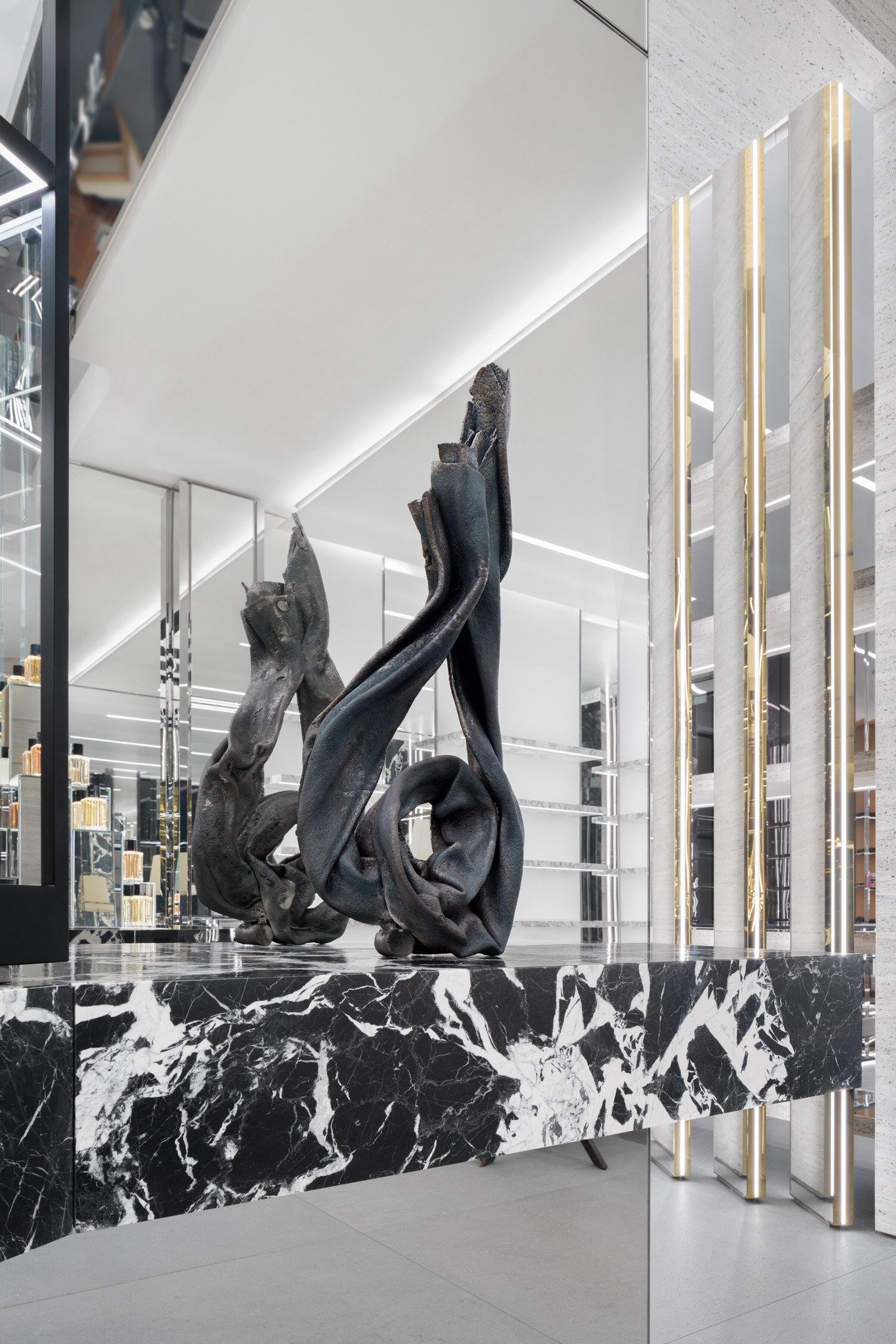
Eli Ping believes in the sanctity of materials. The Brooklyn-based, Chicago-born artist brings an almost monastic rigor to his minimalist works, which slowly emerge from a rigorous process of working and reworking materials over months. “I start with the overall sense of what I want to bring into existence and the materials that I might use, but I find my way by feeling around in the dark over long periods,” he explains.
In the past, Ping has described his process as rooted in the Tao, the origin of all things in Chinese philosophy. Ping’s work Moult, 2022, offers a moment of evocative beauty in Celine’s Miami store: A twist of cast iron is formed into a flame-like shape that rests upon a pedestal of eight cinder blocks. Ping has alchemized cast iron into a state of near-liquid fluidity; it looks more like wet and twisted drapery—reminiscent of a Greek marble statue—than an industrial material.
“I tend to use one material at a time,” Ping notes of his focused process of experimentation. “In the end, I want it … to have the appearance of being made all at once.” He acknowledges certain affinities between Celine’s clean aesthetic and the purity that defines his own practice. “Celine works in minimalist silhouettes and with a simplicity of colors," he says, "which is consistent with my work’s essence.”
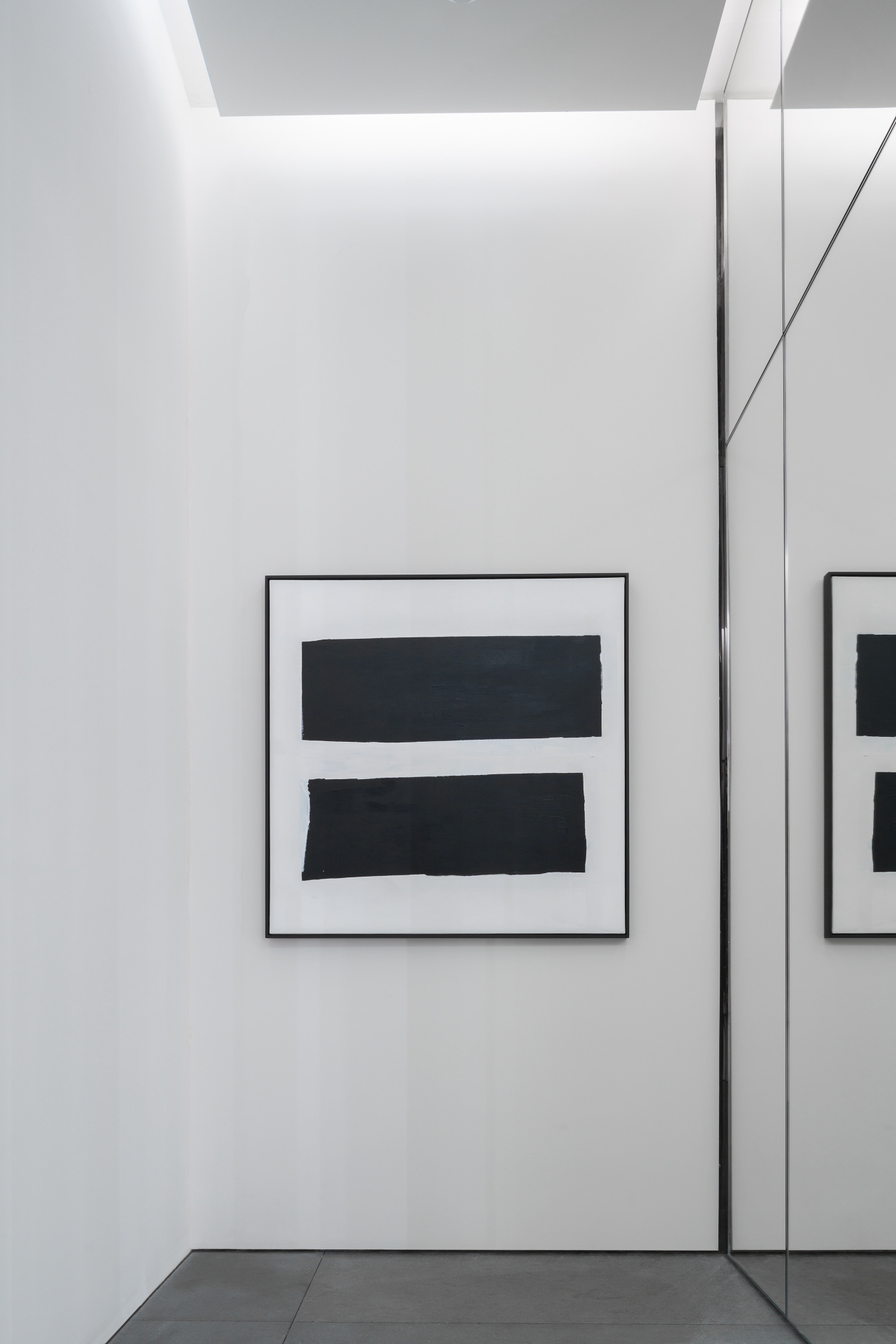
Philosophy, painting, collage, and sculpture are but a few of the avenues of expression Syrian-American artist Simone Fattal has explored over a life and career that has taken her from Beirut to Paris to Sausalito, California. In Miami, Celine has given a place of prominence to Fattal’s State of the Sky, 7, 2013, a dynamic abstract painting.
The artist created the work, part of a larger series, as a means of visualizing and abstracting the moon, stars, and planets. Black forms stretch across a pure white background, rendered in gestural bursts with a cosmic intensity. Fattal's idea for the series sprung from a moment of intense inspiration. “It came over me in an extremely urgent way, very quickly. Sometimes I would paint two works a day,” she recalls.
For the artist, painting is a reflection of her relationship to the world around her, while sculpture offers a means of tapping more abstract and philosophical veins. Fattal says Celine's Miami space feels like a fitting environment for her work. “I adore Celine,” she says. “I love the elegance—their bags are extremely well conceived for the working woman.” Currently, the artist is preparing for several upcoming exhibitions, as well as a monograph of her work, to be released by D.A.P. this month.

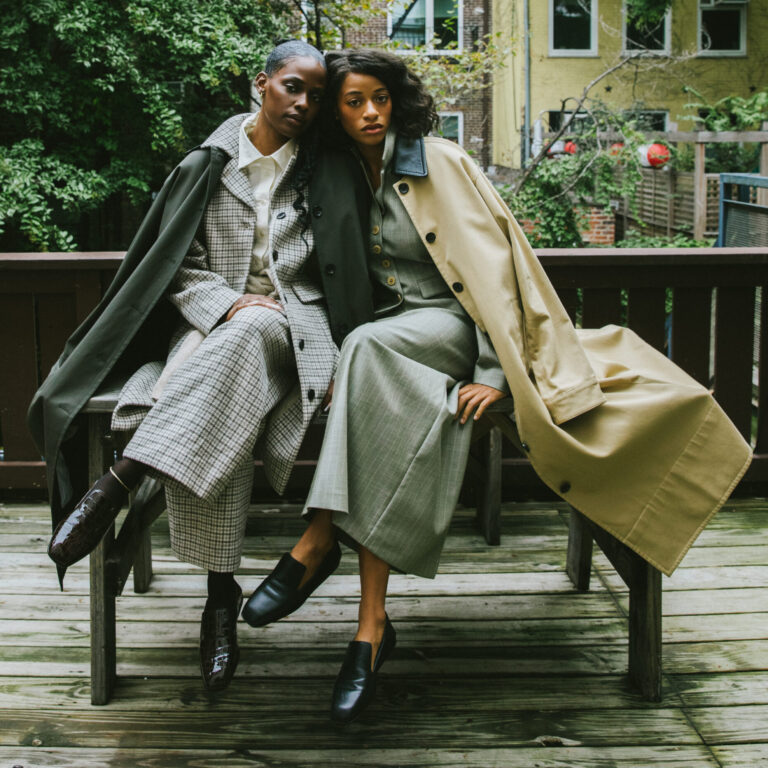
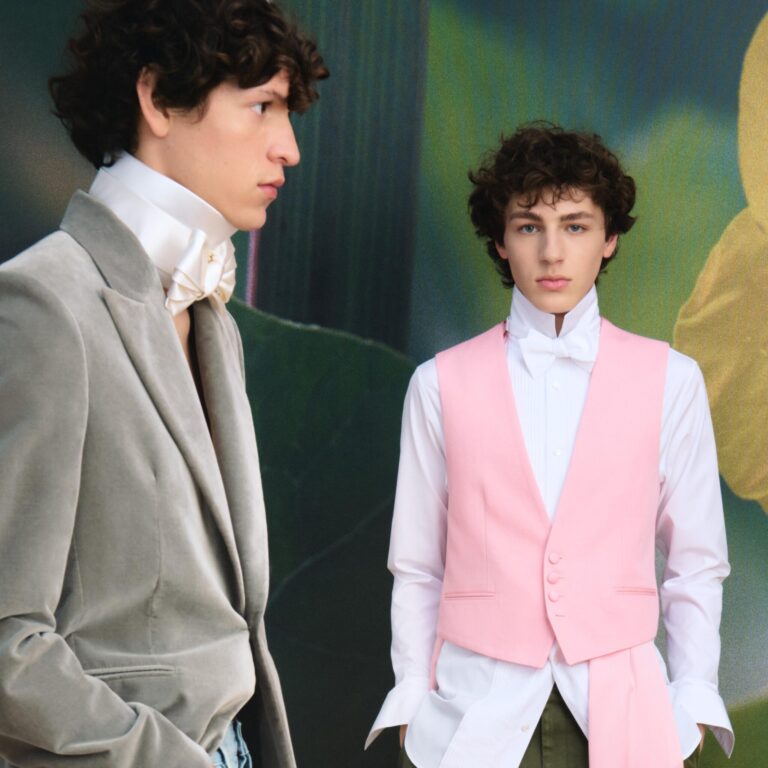







 in your life?
in your life?

